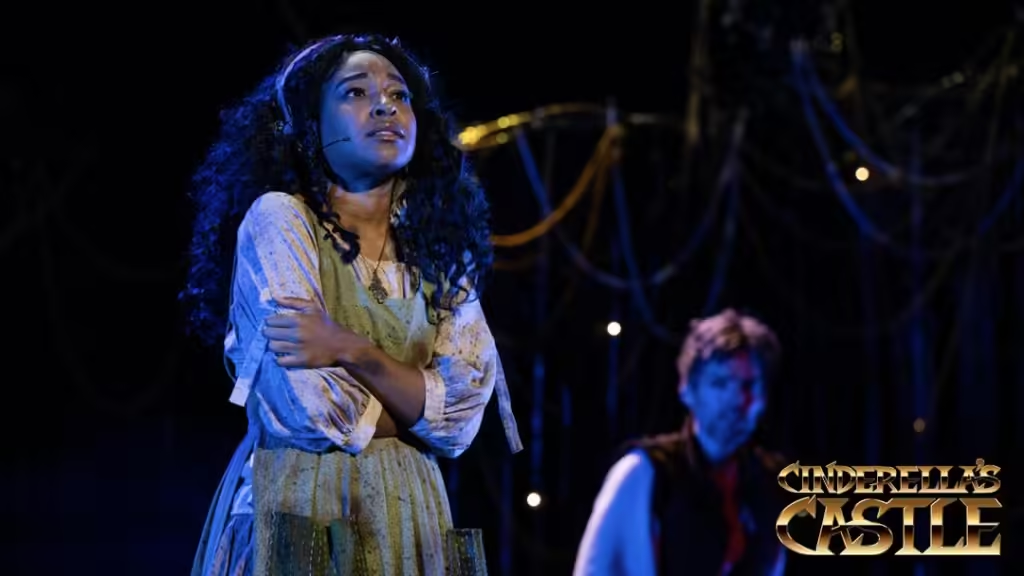Cinderella’s Castle (2025) is a remarkable cinematic narrative because of its innovative approach to blending various genres and styles. Directed by Nick Lang and produced by StarKid Productions, this darkly humorous retelling of the classic fairy tale combines magic, puppetry, and music to create a truly unique cinematic experience. Among these, puppetry sticks out as an essential element that improves the film’s story and visual appeal.
Enhancing the Fantasy World
In Cinderella’s Castle (2025), puppetry is an integral component of the story and aesthetic, not merely a stylistic decision. The filmmakers give the fantasy genre a crucial element of magic and whimsy by using puppetry. This strategy enables the movie to create a setting that is both enchantingly strange and familiar, transporting viewers to a place where anything is possible.
Puppetry is a useful tool for bridging the gap between modern cinematic techniques and traditional fairy tale elements. Modern fantasy movies frequently use CGI and special effects, but puppetry adds a tangible, handmade element to the narrative. The more abstract digital effects contrast with this tactile sense of reality, which grounds the fantastical elements in a way that feels genuine and inventive.
Bringing Fantastical Characters to Life
The puppetry in Cinderella’s Castle is noteworthy for its contribution to the realism of a few fanciful characters. Puppetry with intricate designs is used to portray characters such as Sir Hop-A-Lot and the Fairy Queen of Sweet Dreams, giving their roles a distinct visual dimension. The puppets are incredibly detailed, from their ornate outfits to their expressive faces, which enables them to portray a variety of traits and emotions that enrich the story of the movie.
The characters and the audience can also engage in lighthearted conversation thanks to the usage of puppets. For example, Kim Whalen’s portrayal of the Fairy Queen of Sweet Dreams uses her puppet to create enchanting moments that enchant and captivate viewers. In a similar vein, Jon Matteson’s portrayal of Sir Hop-A-Lot incorporates humor and personality into his role through the peculiar gestures and movements of his puppet. These characters become enduring not only because of their deeds but also because of their demeanor and interactions with the audience.
Creating a Unique Visual Element
Puppetry is another element that contributes to the film’s distinctive visual aesthetic. The use of puppets in the live-action sequences creates a visually arresting contrast that sets Cinderella’s Castle (2025) apart from other fairy tale adaptations. The puppets’ movements, textures, and interactions with their surroundings weave a colorful visual tapestry that enhances the film’s overall appearance.
The way that color and set design are used in the movie enhances the puppets’ visual impact. The colorful outfits and creative sets are made to go with the puppets, resulting in a seamless and engrossing fantasy setting. A film that feels both grand and personal is created when puppetry is combined with these visual components; each scene is painstakingly created to entice viewers into the film’s magical universe.
Puppetry as a Storytelling Device
In Cinderella’s Castle, puppetry is used as a potent storytelling tool in addition to its aesthetic value. It might be difficult to accomplish creative and expressive interactions with other methods, but the puppets’ physicality makes it possible. To further emphasize the humorous and fantastical aspects of the tale, the puppet’s movements, for instance, can be utilized to depict magical effects or whimsical actions.
Puppetry also allows for a deeper exploration of character traits and relationships. The tangible presence of the puppets makes the interactions between characters more vivid and engaging. Through their physical expressions and movements, the puppets can convey subtle nuances of emotion and intention, adding depth to the characters’ relationships and the overall narrative.
Puppetry is more than just a decorative element in Cinderella’s Castle (2025); it is an essential part of the storytelling process. The filmmakers’ use of puppets in the movie adds a whimsical and magical element that enriches the fantasy setting, gives life to fanciful characters, and produces an unforgettable visual experience. The end product is a movie that is notable for its inventive use of puppetry, fusing age-old methods with contemporary narrative to produce a genuinely captivating cinematic experience.
